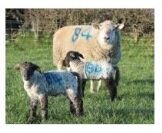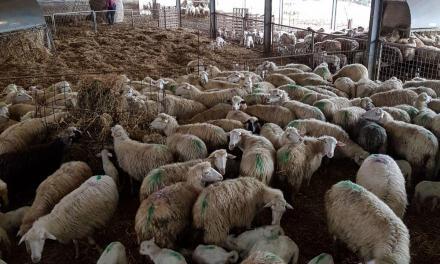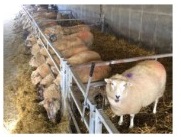This post is also available in:
![]()
![]()
![]()
![]()
![]()
Guidelines for the interpretation of milk urea concentration in sheep milk
Solution name: Guidelines for the interpretation of milk urea concentration in sheep milk
Need: Urea levels in milk (unbalanced energy/protein ratio in the diet)
Description:
Urea is a nitrogenous compound present in the blood, milk and urine of ruminants that is formed in the liver mainly from ammonia resulting from the fermentation of feed proteins in the rumen. In this way, the liver cells transform a toxic compound (ammonia) into one that is not toxic (urea). This transformation, however, entails energy costs for the animal, which increases with the increase in the concentrations of urea in the blood and milk, which are correlated each other.
The concentration of urea in milk is an indicator of both the percentage of protein in the diet and the ratio of protein to energy in the diet. It is also an environmental indicator: in fact, as the level of urea in milk increases, the excretion of N in the urine increases as well.
In general, high-protein diets cause an increase in the concentration of urea in milk. Even diets that are balanced for protein but lack energy can lead to high concentrations of urea. This is the most dangerous situation for the animal and the most harmful for the environment because it involves a release of N, without any production advantage.
The concentration of urea in milk also depends on other dietary factors: it tends to increase with the rumen degradability of proteins and decreases if the diet contains tannins (polyphenols), particularly if they are condensed tannins. In this case, however, the decrease in urea may be partly associated with the reduction of protein digestibility.
In high-protein or low-energy diets, the detoxification capacity of ammonia in the liver may be insufficient: this is particularly risky during the breeding period because ammonia is toxic to embryos.
How to implement:
To establish the target values of urea in milk, we must consider the physiological stage and the production level.
Physiological stage:
- Lactating ewes at early-mid lactation stage;
- Lactating ewes at the end of lactation (mating period).
Early-mid lactation stage
Indicative values of urea in milk (mg/100 ml) in homogeneous groups for milk production and weight.
| Milk (kg/d) | |||||
| Body weight (kg) | 1.0 | 1.5 | 2.0 | 2.5 | 3.0 |
| 45 | 33 | 38 | 41 | 44 | 46 |
| 55 | 30 | 36 | 39 | 43 | 44 |
In non-homogeneous groups, the level of urea in bulk milk can be greater by 5 mg/100 ml in order to prevent under-feeding of the more productive sheep. These “increased” urea levels can also be accepted even for homogeneous groups of high production sheep in the early lactation phase, following the mobilization of the protein reserves used for the synthesis of hepatic glucose.
Conversely, values lower than 5 mg/100 ml compared to those indicated in the table are acceptable only if it is verified that the protein requirements are fully met (100%).
In modulating the diet of lactating ewes it is NOT sufficient to consider ONLY the production level and the concentration of urea in the milk but also other indicators (e.g. consistency and color of feces).
- End of lactation (mating period).
The concentration of urea in milk should be 30-40 mg / 100 ml. Milk urea concentrations above 45-50 mg / 100 ml in the period of mating or around artificial insemination can lead to embryonic mortality. In this phase ALWAYS avoid high urea levels due to lack of energy in the diet.
Advice:
Bi-monthly control of bulk milk urea by a reliable laboratory. When possible, check milk urea in the different groups in production.
Topic: nutrition
Production: Dairy
Animal Category: Adult / Replacement
Issue: Urea levels in milk (unbalanced energy/protein ratio in the diet)
Level of Solution: Practical
Country: Italy
Expected benefits
- Better health of the flock;
- Better farm hygiene (absence of diarrhea due to protein excess);
- Less waste of protein-based concentrates;
- Better productive and reproductive results.
Prerequisites and/or constraints:
Prerequisite: milk urea analysis of tank milk
Constraint: Difficult diet balancing to target milk urea levels with non-rationed grazing.
Cost Benefit analysis
In the case of a protein excess in the diet, the main advantage in the monitoring of urea in milk in order to correct the diet is the reduction in costs due to a more efficient use of concentrated feeds. The costs of the labs have to be evaluated in the specific situations.
With a low concentration of milk urea due to a deficit of crude protein in the diet the profitability for the farm is assured by the increase in incomes that largely counterbalances the higher costs for concentrates.
Sustainability analysis
A better diet balance leads to fewer health problems and higher feed efficiency. In addition, a less nitrogen emission (NH3, and nitrous oxide) reduce the carbon footprint of sheep farming.
The reduction of an unbalanced diet improves animal welfare and the farmer’s “image” due to the recognition of greater care in the management by dairies and food technicians and veterinarians.







